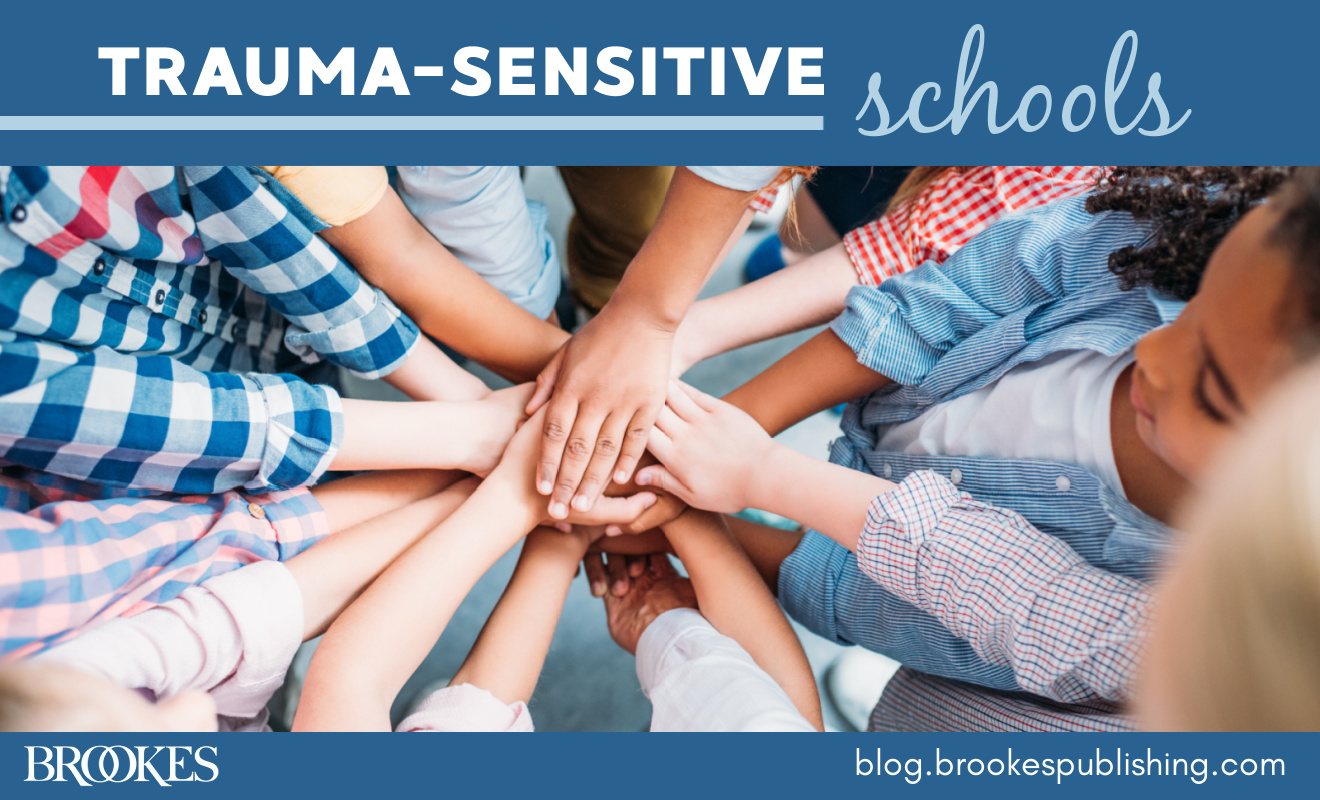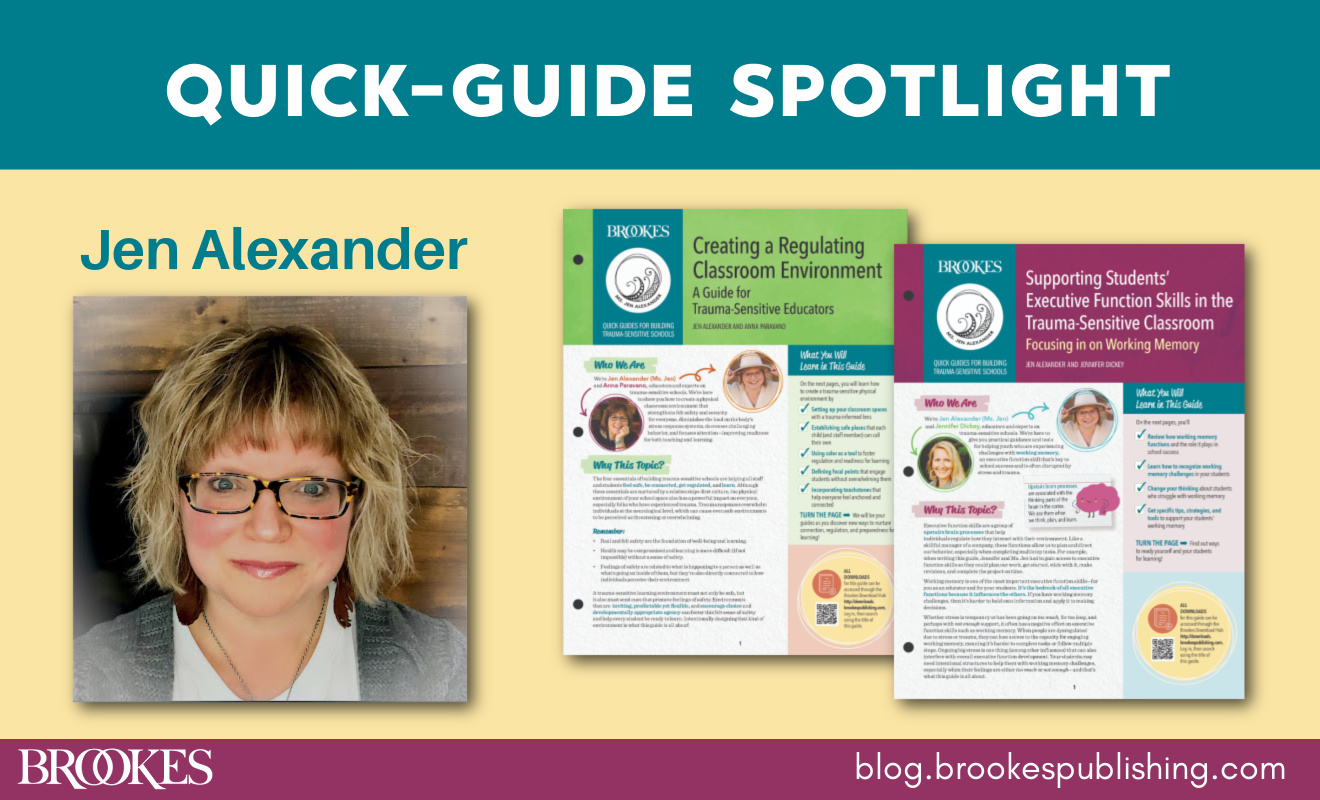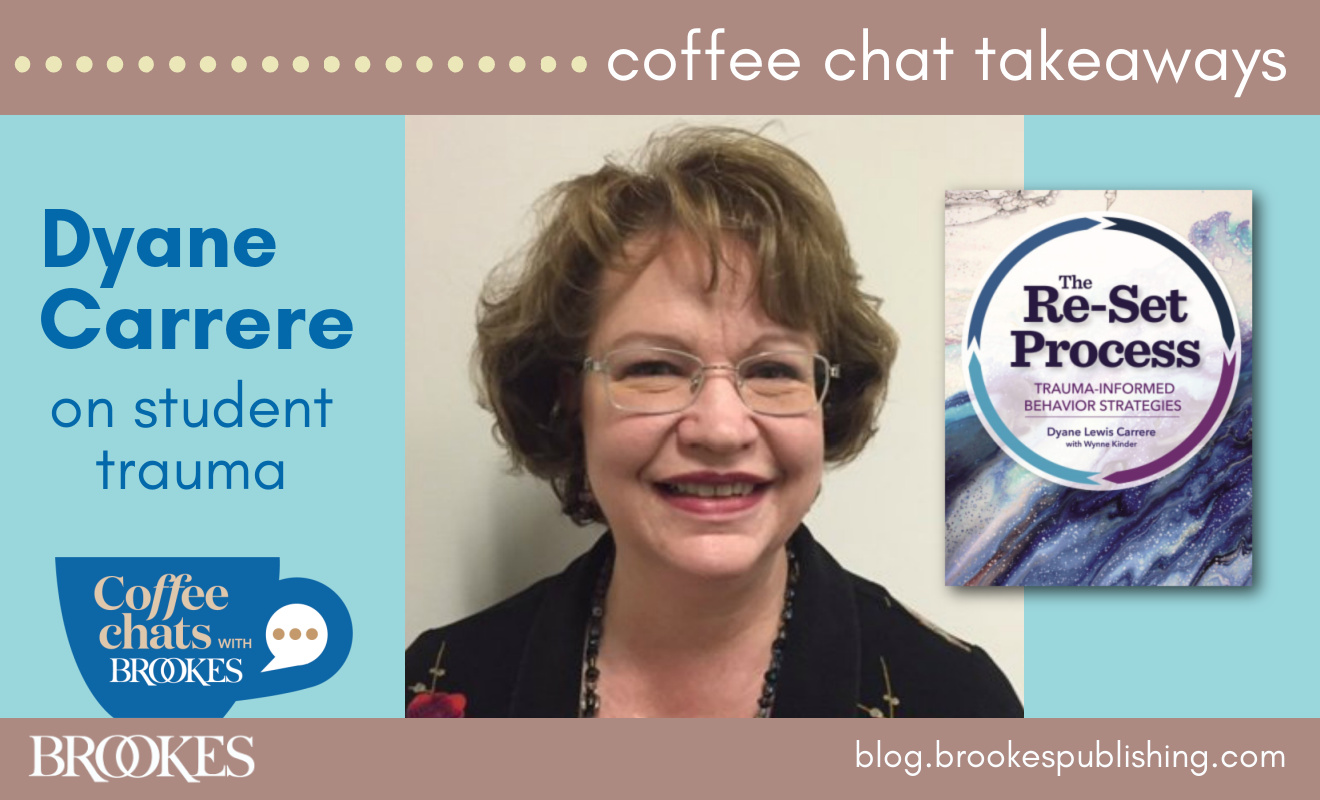21 Trauma-Sensitive Teaching Tips to Try This School Year
August 1, 2024
Trauma-sensitive teaching is vital to both the academic success and social-emotional well-being of your students. This year, as you get to know your new students, keep the trauma-sensitive teaching tips in today’s blog post at your fingertips. Adapted from Brookes books by renowned experts, these strategies will help you create a supportive, responsive, and nurturing learning environment for every learner in your classroom.
Set clear behavioral expectations. Defining three to five expectations creates not only a road map for student behavior but also a radar system for you to use in reinforcing prosocial behavior. It also creates a healthy degree of predictability and helps your students realize they have some power over their own success in your classroom. Providing students who have lived through trauma with a predictable set of expectations and positive reinforcement supplies essential supports grounded in a trauma-informed approach.
Engage your students in setting expectations. Students are empowered when they see that their voice was heard during the process of developing their classroom community. This applies to all students but especially those who have lived through trauma.
Help students build protective factors. As educators, we are in a prime position to become an important protective factor in the lives of our students and help them build protective factors in their own lives. Here are 13 protective factors you might help students focus on.
Incorporate trauma-sensitive movements. Trauma-sensitive movements are gentle movements that tap into the benefits of yoga but use a trauma-sensitive approach by emphasizing personal safety and choice. Use the Take Five approach in this quick guide by Jen Alexander and Traci Ludwig to improve your students’ regulation, boost connection, and help everyone get ready for teaching and learning.
Handle shifts in lighting sensitively. Turning on lights can be startling to some students. Avoid this overstimulation by instructing students to close their eyes as the shift to “on” is made. Consider having students who are sensitive to changes in lighting be the ones who turn the lights off or on; active participation helps their systems be more prepared for the change.
Designate quiet spots. Loud noises and loud voices are startling to traumatized systems. Consider placement of noisier gathering spots in relationship to other quieter spots to assure that those quieter spots are true refuges.
Create safety maps with students. Provide students with a map of the classroom or school and ask them to identify places where they feel safe and unsafe physically and emotionally. Studying patterns that emerge by looking at safety maps from many students may provide insight into systemwide issues.
Be careful with public feedback. For some students who are learning to trust, even positive things may need to be more private than public. Pay attention to how a student responds to positive statements and adjust accordingly.
Don’t stand over your students. Students whose brains are on hyper-alert are more sensitive to physical positions. When we stand over them, it feels threatening. When we interact by being at the same physical level or even slightly below their level, the amygdala can relax, and we can connect better.
Do away with comparison charts. Charts that compare one student to another can set ourselves and our students up for frustration and failure. For students with trauma histories, comparison to their peers is suffocating.
Privately poll your students to see whether there are any movements or activities that make them feel uncomfortable or unsafe. Use small slips of paper on which a student can circle a face (happy, okay, uncomfortable) and turn them in anonymously.
Take care with transitions. Monitor the pace of the day to ensure that children have adequate time to make transitions. Avoid rushing them or placing too many demands on them at one time. This can lead to neurological “flooding” and a downshifting to survival mode.
Try visualization exercises to help students stay calm enough to focus. Keep a collection of pictures that students find soothing in a special folder. Hang up a picture and encourage children to look at it often and to try to visualize it. When you see a student getting stressed, say, “Let’s close our eyes and go to the beach for a minute.”
Offer safety reminders. Remind students several times a day that they are safe in school. Work with them to develop safety plans that include knowing what to do in an emergency and how to respond to peers who may be speaking or acting in a way that is harmful to their emotional safety.
Play a quick game to get students regulated. Games can serve as wonderful trauma-sensitive techniques that can help us coach for student regulation. One suggestion is the Mime Game, demonstrated by Ms. Jen Alexander in this short video. Use this at the beginning of class with students if they are restless and having difficulty showing they are ready to learn. You can also use it mid-lesson, particularly if students have been working in groups and need help down-regulating to an arousal state where they can focus and learn during instruction.
Help youth differentiate between real danger and perceived threats by asking themselves, “Am I really in danger?” Then teach and coach youth about how to accurately read another’s emotional cues instead of over-relying on perceived negative affect.
Plan for substitute teachers. Put plans in place for supporting traumatized students in relation to unfamiliar substitute teachers. Any preparation that can be done ahead of time to help a student know that a teacher will be absent and a substitute will be present is helpful. You might plan to allow a traumatized student to hold onto the regular teacher’s badge or help the substitute by crossing off things on the schedule. In some cases, having the student go to another classroom or be paired with a known and trusted paraprofessional for at least part of the day may be something to consider. Extra time with other preferred adults could be a possibility, too.
Incorporate small-group activities and individual projects that help students identify their strengths, weaknesses, and dreams. This actively builds hope for the future through experiences that foster college, career, and civic readiness.
Use check-in and check-out routines. Traumatized students usually experience more dysregulation and often need proactive plans that help them regulate on even the most typical school days. Daily check-in and checkout routines—for example, time to paint, use clay, draw, journal—allow for practice of both coregulatory and self-regulatory strategies. Any trusted adult in the building can provide these 10- to 15-minute meetings, and one student can be paired with multiple adults if needed.
Plan other regulatory breaks. Provide calming spots for students to use as needed in the classroom, or even in a room in one wing of the school. These spots should be comforting and filled with fidgets, a beanbag, access to music, a mini-trampoline, or other preferred sensory activities.
Embrace new ways of thinking. Read this blog post to learn about five paradigm shifts that are key to building a trauma-sensitive school. Start noticing when you might be looking at a student from an old paradigm. Then, make a conscious effort to challenge that line of thinking. Ask yourself, “How do I know that’s what is happening right now? Could there be another way to look at this and, thus, a different way to approach this situation that will better help me help this kid?”
For more practical guidance on trauma-sensitive teaching, get the books behind today’s blog post. And check out this exciting new virtual course on Becoming a Trauma-Sensitive Educator, presented by trauma expert, experienced teacher, and bestselling author Jen Alexander (coming in late August 2024)!
- Tips 1-3 adapted from The Teacher’s Guide for Effective Classroom Management, Third Edition,by Tim Knoster & Stephanie Gardner
- Tip 4 from Trauma-Sensitive Movements for the Classroom by Jen Alexander & Traci Ludwig
- Tips 5-11 adapted from The Re-Set Process by Dyane Lewis Carrere with Wynne Kinder
- Tips 12-14 adapted from Reaching and Teaching Children Who Hurt by Susan Craig
- Tips 15-21 adapted from Building Trauma-Sensitive Schools by Jen Alexander




Write a Comment
Your email address will not be published. Required fields are marked *
Post a Comment